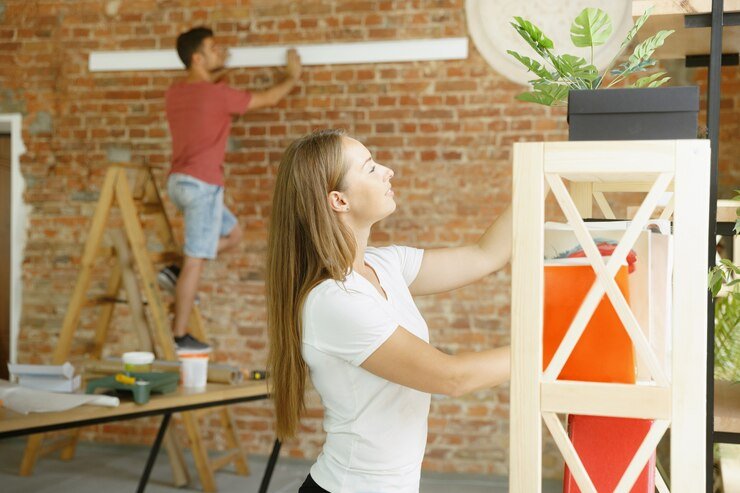Diy wooden contraption shelving with levers to open looking to add a distinctive touch to your home décor? Why not combine creativity, practicality, and a dash of ingenuity by building your very own wooden contraption shelving with functional levers? This unique shelving system not only serves as a storage solution but also becomes a statement piece that showcases your woodworking skills and personal style.
Whether you’re a home decorator looking for something one-of-a-kind or a woodworking hobbyist eager to tackle your next project, this guide has everything you need to bring the magic of lever-operated wooden shelving to your space.
Why Custom Wooden Shelving?
There’s something undeniably appealing about wooden shelves. They exude warmth, natural beauty, and timeless charm. But what takes them to the next level is the ability to customize them to fit your space, needs, and aesthetic preferences.
By adding a lever mechanism, you inject a sense of playfulness and functionality to your shelves. Imagine swinging open a section of your shelf to reveal hidden compartments—or even creating an interactive feature that makes organizing fun!
What Are DIY Contraption Shelves with Levers?
Contraption shelving with levers incorporates mechanical elements into the traditional design of wooden shelves. The idea is to build shelves that can open, fold, or reveal hidden segments using a simple lever mechanism.
These shelves are not just practical—they intrigue people and often serve as conversation starters. Plus, they allow home decorators and woodworking enthusiasts to push their creative boundaries and experiment with mechanical and design ideas.
Now that you know what’s in store, it’s time to start planning your very own lever-operated shelving system!
Step 1: Planning and Designing Your Shelves
Every great DIY project starts with solid planning. Follow these steps to ensure success from the start:
1. Define Your Purpose
- What will your shelves hold? (Books, plants, decorations, or something else?)
- Will the lever mechanism serve a practical purpose (e.g., opening hidden compartments), or is it more for style?
2. Choose Your Materials
For wooden contraption shelves, you’ll want durable and workable wood. Popular options include:
- Pine for an affordable and lightweight choice.
- Oak or Maple for sturdiness and a polished appearance.
- Plywood for budget-friendly versatility.
3. Create a Blueprint
Sketch out your design, including the dimensions of the shelves and the lever mechanism. Think about:
- Weight Distribution: Make sure the lever can handle the weight of the shelves and their contents.
- Space Requirements: Measure the area where you plan to install the shelves.
Pro Tip: Use free design software like SketchUp to visualize your project in 3D!
Step 2: Gather Tools and Materials
Here’s a list of everything you’ll need to get started:
- Tools: Saw, drill, clamps, screwdriver, measuring tape, level, and safety goggles.
- Materials:
- Selected wood
- Hinges and metal levers
- Screws and nails
- Sandpaper or an electric sander
- Wood glue
- Paint, stain, or varnish for finishing
Having all your tools and materials ready beforehand will make the process much smoother.
Step 3: Constructing Your Shelves
This is where the magic happens! Follow these steps to build your wooden contraption shelves:
1. Cut the Wood
Using your blueprint, measure and cut the wood pieces for the shelves, backboard, and lever mount. Smooth out any rough edges with sandpaper.
2. Assemble the Frame
Start by constructing the main framework of the shelves. Use wood glue and secure the joints with screws or nails for a sturdy build.
3. Add the Lever Mechanism
The lever mechanism can vary in complexity depending on your design. A simple pivot lever or straight lever arm works for most basic projects. Secure it to the frame using hinges or screws, ensuring it operates smoothly.
4. Test for Stability
Before attaching the shelves to the wall, test the entire structure and the lever to ensure stability and proper functionality.
Step 4: Finishing and Personalization
Once your shelves are fully constructed, it’s time to add the finishing touches and customize them to match your style.
- Stain or Paint: Give your creation a pop of color or keep it rustic with a natural wood finish.
- Decorative Elements: Consider adding unique knobs or hardware to the lever mechanism.
- Style Matching: Choose finishes and tones that complement the theme of your room—be it modern, industrial, or vintage chic.
Pro Tip: For an artistic twist, try stenciling patterns or adding a two-tone paint design!
Why Use Levers?
Levers are the heart of this design and add a flair of innovation to wooden shelving. Here’s why they’re worth the extra effort:
- Enhanced Accessibility: Open up sections of your shelving effortlessly.
- Functional Fun: Make storage more interactive and engaging.
- Design Aesthetic: Levers add an industrial, mechanical edge to a natural wooden look.
Inspiration from DIY Enthusiasts
Still need convincing? Check out these success stories from fellow woodworking enthusiasts:
- Anna from Seattle turned her lever-operated shelves into a mini bar with concealed compartments—perfect for hosting guests.
- Mark in Colorado used reclaimed timber to make industrial-style contraption shelves for his home office. “It’s more than storage—it’s a statement,” he says.
- Jenna, a Home Decor Blogger, used pastel paints to create a whimsical effect for her kids’ room, complete with levers to reveal secret toy cubbies.
These real-life examples show how this DIY project can elevate both functionality and creativity in your home.
Unleash Your Inner Carpenter
Building wooden shelving with levers is not just a rewarding DIY project—it’s a way to express yourself, personalize your space, and showcase your skills. Plus, it’s more cost-effective than buying pre-made designer furniture!
Do you plan to tackle this project? Share your photos and experiences with our community of home decorators and woodworking enthusiasts. Inspiration is always more powerful when shared.
